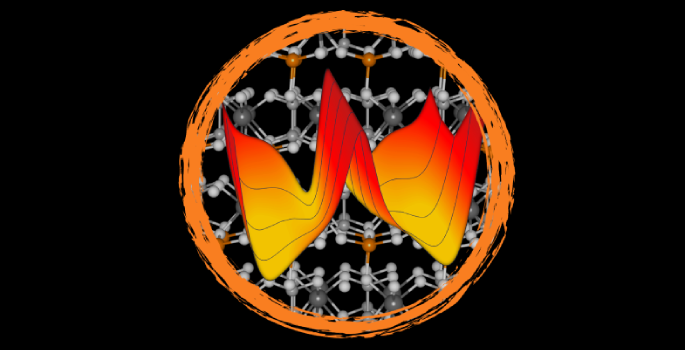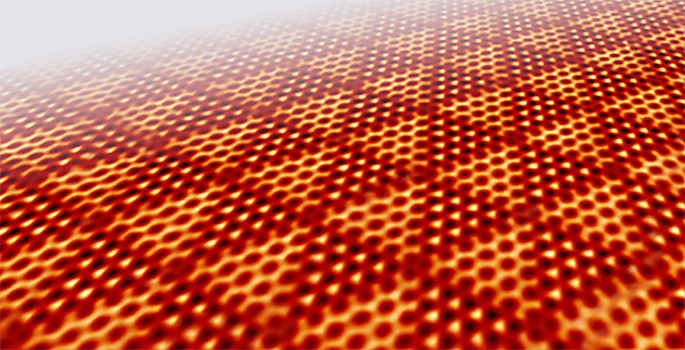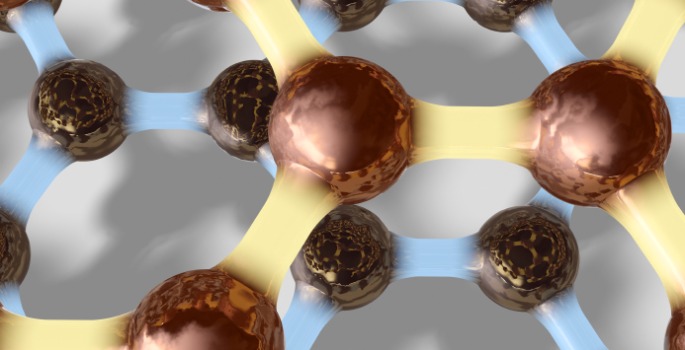Sokrates Pantelides
-

International collaboration yields breakthrough that could revolutionize computing technologies
Scientists from Vanderbilt and UCAS made a breakthrough in single-atom vibrational spectroscopy in graphene, crucial to understanding materials’ thermal properties and nanophotonics. Read MoreMar 28, 2023
-

International collaboration yields breakthrough that could revolutionize computing technologies
Researchers from Vanderbilt University and University of the Chinese Academy of Sciences have made a significant advancement in understanding the correlation of the vibrational patterns of atoms at the level of chemical bonds in conducting materials silicon and graphene. Vibrational spectroscopy of substitutional Si impurities in graphene with different bonding configurations. (Image by UCAS) Atomic... Read MoreMar 28, 2023
-

Research Snapshot: Breakthrough measurements/theory of vibrating atoms in nanostructures ushers in new class of technology
Vanderbilt, Oak Ridge National Laboratory, the University of Virginia and international collaborators merge breakthrough experiments and theory of nanomaterial behavior to usher in the next wave of technology. Est. reading time: 3.5 mins. Read MoreJan 26, 2022
-

Breakthrough measurements/theory of vibrating atoms in nanostructures ushers in new class of technology
Vanderbilt researchers Sokrates Pantelides and Joshua Caldwell are part of an international collaboration that has demonstrated a new way to manipulate and measure subtle atomic vibrations in nanomaterials. This breakthrough could make it possible to develop customized functionalities to improve on and build new technologies. Sokrates Pantelides (Vanderbilt University) Joshua Caldwell (Vanderbilt University) Electron beams... Read MoreJan 26, 2022
-

Vanderbilt to lead $5 million Air Force center of excellence in radiation effects research on electronics
Center aims to advance the understanding of physical mechanisms responsible for radiation-induced effects on emerging technologies The Institute for Space and Defense Electronics at Vanderbilt University has been selected as the Center of Excellence in Radiation Effects by the U.S. Air Force Office of Scientific Research and the Air Force Research Lab. The $5 million, five-year program will be... Read MoreOct 29, 2021
-

Vanderbilt to lead $5 million Air Force center of excellence in radiation effects research on electronics
Center aims to advance the understanding of physical mechanisms responsible for radiation-induced effects on emerging technologies The Institute for Space and Defense Electronics at Vanderbilt University has been selected as the Center of Excellence in Radiation Effects by the U.S. Air Force Office of Scientific Research and the Air Force Research Lab. The $5 million, five-year program will be... Read MoreOct 29, 2021
-

Research Snapshot: New microscopy technique of electron distributions and theory unveils a feature that can shape applications of a class of quantum materials
Theory and experimental data on an electride, a member of a class of exotic materials, unveil new secrets that may impact technology developments. Est. reading time: 2 mins. Read MoreApr 7, 2021
-

Kudos: Read about faculty, staff and student awards, appointments and achievements
Read about recent faculty, staff and student awards, appointments and achievements. Read MoreJun 25, 2020
-

Experiments into amorphous carbon monolayer lend new evidence to physics debate, lay groundwork for future devices
A new study into two-dimensional amorphous carbon is providing answers to long-standing questions regarding the atomic makeup of bulk amorphous materials, opening the door to exciting device applications in the future. Read MoreJan 8, 2020
-

Discovery in ferroelectric material reveals unique property, promising application potential
A discovery from a team of physicists and other researchers is breaking new ground in the study of ferroelectricity, a characteristic of certain dielectric materials that are used in high-technology applications. Read MoreNov 18, 2019
-

Nanoscale origami: Smallest-ever, atomically precise structures set stage for quantum breakthroughs
New technique for manipulating graphene opens the door to new breakthroughs in quantum technology. Read MoreSep 6, 2019
-

‘A Short History of Anger’ explores legacy of genocide, displacement
"A Short History of Anger," centering on the devastating and lasting impact of state-sponsored ethnic cleansing and forced migration, will be performed Sept. 14 at the Blair School of Music. Read MoreSep 5, 2019
-

Quantum mechanics work lets oil industry know promise of recovery experiments before they start
Vanderbilt University physicists developed detailed quantum mechanical simulations that accurately predict the outcomes of various additive combinations in water used for enhanced oil recovery. Read MoreSep 27, 2018
-

Multitasking monolayers
Scientists have discovered a natural process that makes patterned monolayers suitable for creating a wide variety of novel materials with dual optical, magnetic, catalytic or sensing capabilities. Read MoreJul 21, 2017
-

Barrier to faster graphene devices identified and suppressed
Vanderbilt physicists report that they have nailed down the source of the interference inhibiting the rapid flow of electrons through graphene-based devices and found a way to suppress it. Read MoreMar 13, 2012